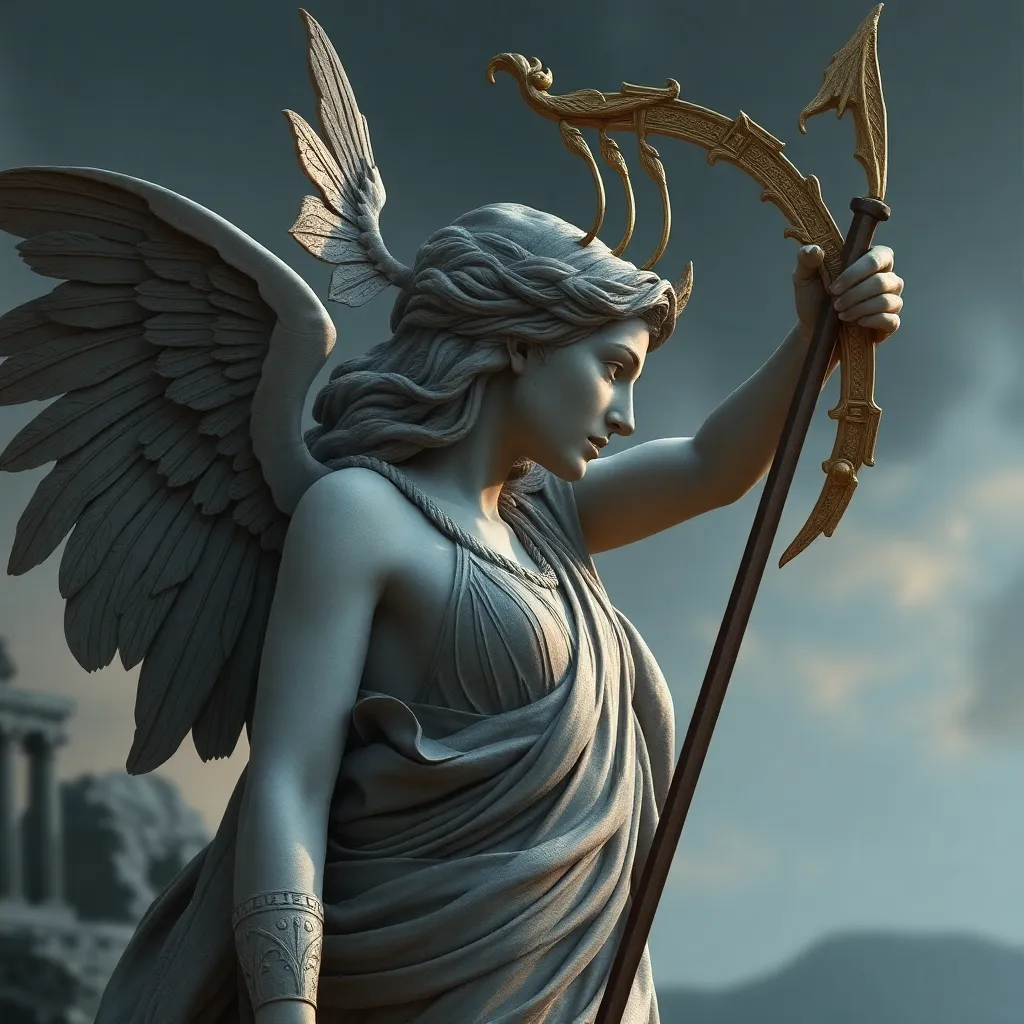Artemis and the Role of the Goddess in Greek Mythology
I. Introduction
Artemis, the daughter of Zeus and Leto, is one of the most revered and complex figures in Greek mythology. As the goddess of the hunt, wilderness, and childbirth, she occupies a central role within the pantheon of ancient Greek deities. Her significance is not only rooted in her divine attributes but also in her embodiment of values such as independence, strength, and protection.
This article aims to explore the multifaceted role of Artemis, delving into her origins, her various domains, and her lasting impact on culture and religion in ancient Greece. By understanding Artemis, one gains insight into the values and beliefs of the ancient Greeks.
II. Origins and Birth of Artemis
The birth of Artemis is steeped in mythology, with various accounts emphasizing her divine nature and close bond with her twin brother, Apollo. According to the most popular myth, Artemis was born on the island of Delos, where her mother, Leto, sought refuge from the wrath of Hera, Zeus’s wife. Artemis’s swift arrival was marked by her immediate role as a helper, assisting her mother in the birth of Apollo shortly thereafter.
Her parentage plays a crucial role in shaping her character. As the daughter of Zeus, the king of the gods, and Leto, a Titaness, Artemis inherits both divine authority and maternal grace. This dual heritage influences her duality as a virgin goddess and a protector of women and children.
III. Artemis as the Goddess of the Hunt
Artemis is perhaps best known as the goddess of the hunt, a role that symbolizes not only the physical act of hunting but also the spiritual connection to nature and wildlife. In ancient Greek society, hunting was a vital activity, representing sustenance, survival, and skill. Artemis embodies these values, serving as a protector of wildlife and the natural world.
Her portrayal in art and literature often emphasizes her prowess as a huntress. Common symbols associated with Artemis include:
- The bow and arrow, signifying her skill and precision.
- The deer, representing her connection to nature and wildlife.
- The moon, highlighting her role as a lunar goddess.
Artemis is depicted as a strong and independent figure, often leading a group of nymphs who share her love for the hunt and the wilderness. This representation underscores her significance as a guardian of the natural world.
IV. Artemis and Virginity
One of the most defining aspects of Artemis’s character is her commitment to virginity. Her choice to remain chaste is significant, aligning her with ideals of purity and independence. This aspect of her identity is particularly important in the context of her role as a protector of young women.
Artemis’s dedication to virginity is illustrated in various myths, such as:
- The story of Actaeon, a hunter who accidentally gazed upon her bathing and was transformed into a stag as punishment.
- The tale of Callisto, a nymph who was seduced by Zeus and subsequently punished by Artemis for losing her virginity.
These myths highlight her fierce protection over her own purity and that of other women, reinforcing her role as an advocate for independence and autonomy.
V. Artemis in the Context of Fertility and Childbirth
Interestingly, while Artemis is celebrated as a virgin goddess, she also holds a significant role in fertility and childbirth. This duality reflects the complexities of femininity and motherhood in Greek mythology. As a protector of women in labor, Artemis is often called upon for assistance during childbirth.
Several myths illustrate her involvement in the birthing process, including:
- Her assistance to women in labor, ensuring safe deliveries.
- Her connection to the lunar cycle, which symbolizes fertility and the cycles of life.
The lunar association further enhances her character, as the moon is often linked to femininity, cycles, and fertility in various cultures.
VI. Worship and Cult of Artemis
Artemis was widely worshipped throughout ancient Greece, with numerous temples and shrines dedicated to her. One of the most famous is the Temple of Artemis at Ephesus, one of the Seven Wonders of the Ancient World. This grand structure served as a major center for her cult and attracted pilgrims from all over the Greek world.
Festivals in honor of Artemis, such as the Brauronia, were significant events that included rituals, processions, and offerings. These celebrations often emphasized her protective role over women and children.
The role of priestesses in her worship was also crucial, as they acted as intermediaries between the goddess and her followers. The community’s involvement in these rituals highlights the importance of collective reverence for Artemis.
VII. Artemis in Literature and Art
Artemis has been a prominent figure in ancient Greek literature, with references found in works by poets like Homer and Hesiod. Her character is often depicted as strong, independent, and fiercely protective, reflecting her multifaceted nature.
In classical art, Artemis is frequently represented in sculpture and pottery, showcasing her as a huntress, often accompanied by animals like deer or hounds. The evolution of her image throughout history demonstrates her lasting significance, influencing later artistic and literary representations of femininity and strength.
VIII. Conclusion
The enduring legacy of Artemis in modern times speaks to her multifaceted roles and significance in Greek mythology. As a goddess of the hunt, virginity, and childbirth, she embodies complex ideals that resonate with contemporary discussions about femininity and empowerment.
Artemis remains a powerful symbol of independence, protection, and strength, serving as an inspiration for those who seek to challenge traditional gender roles and assert their autonomy. Through her stories and representations, Artemis continues to be a relevant figure in both ancient and modern contexts.




